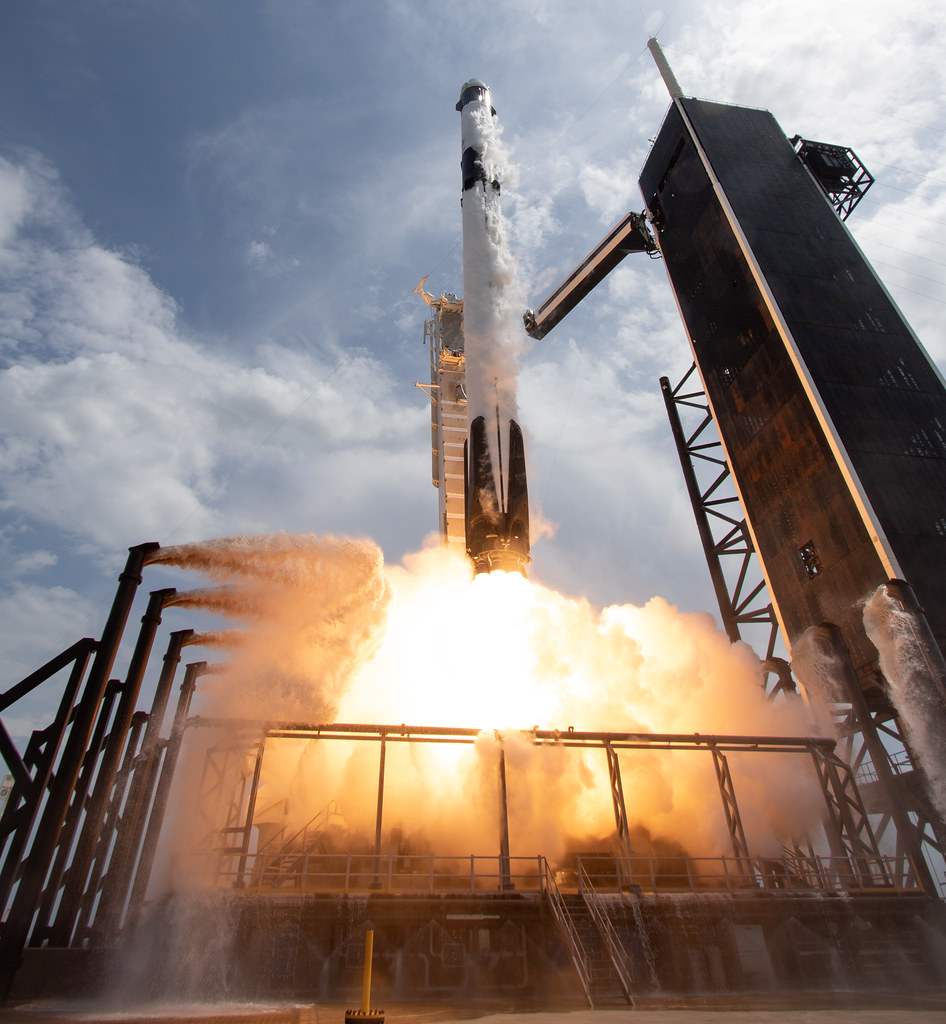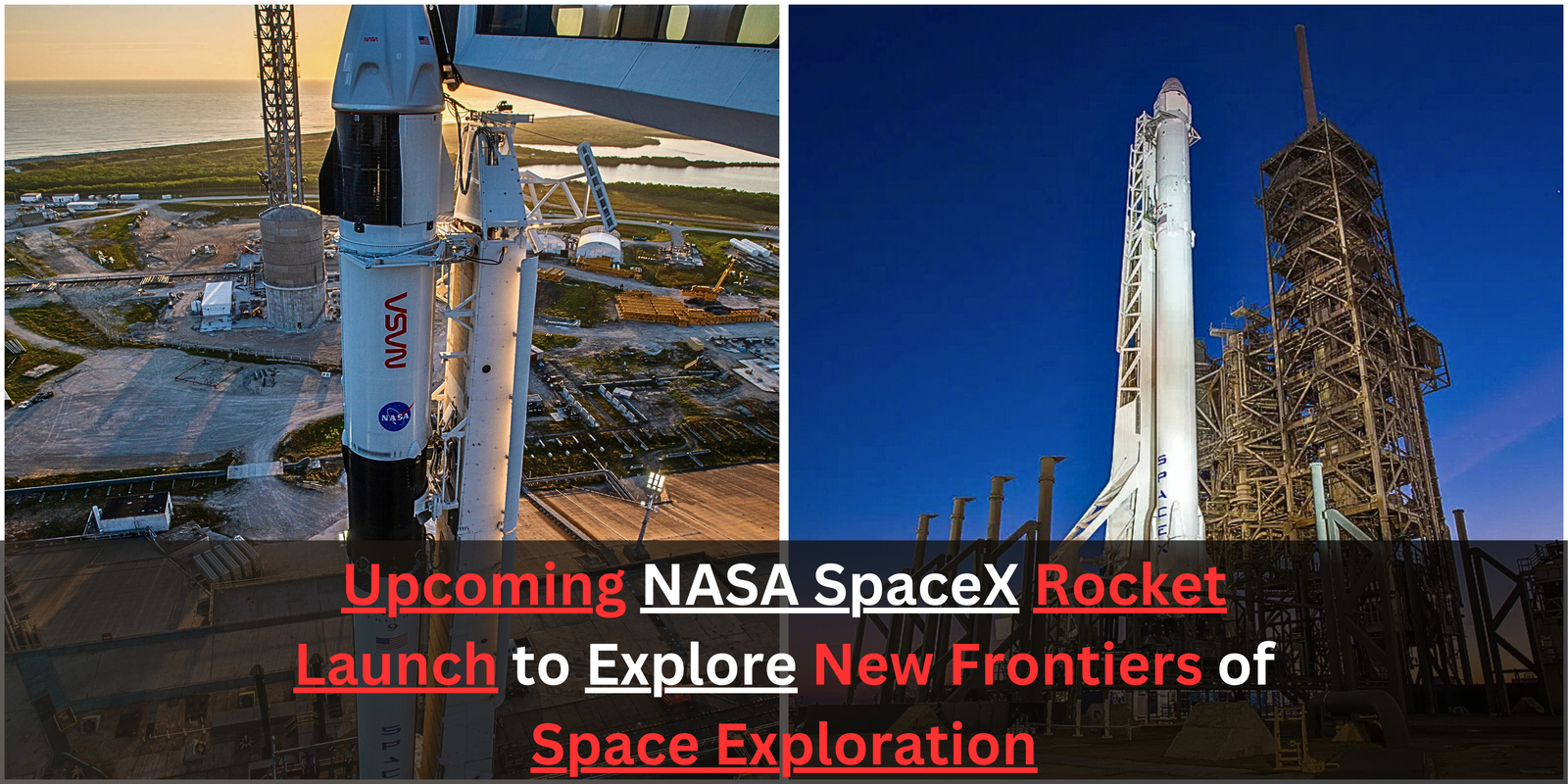Introduction to SpaceX
NASA and SpaceX have been the epitome of space exploration and innovation in the last few years. Together, they have revolutionized the mode of space missions with a series of hugely successful rocket launches that have impressed the world. From transporting astronauts to the International Space Station (ISS) to sending payloads far into space, NASA and SpaceX are paving the way for the next chapter in human exploration of the stars.

The Genesis of a Revolutionary Alliance
Although NASA has been the foundation of U.S. space exploration since its establishment in 1958, SpaceX, established by Elon Musk in 2002, introduced a new philosophy to the aerospace sector. SpaceX’s mission of lowering the cost of going to space and opening it up for private businesses and commercial consumers harmonized with NASA’s ultimate goal of achieving sustainability in space travel. Over the years, NASA and SpaceX collaboration has evolved into a powerhouse that has gained astounding milestones.
SpaceX’s Falcon 9: Reusable and Reliable
One of the pillars of the NASA-SpaceX agreement is SpaceX’s Falcon 9 rocket, a reusable launch system that has radically reduced the expense of sending payloads into orbit. The Falcon 9’s potential to land and be reused is groundbreaking, something that has reduced space travel’s inefficiency and made it financially sustainable.

The Falcon 9 has been the go-to rocket for NASA in numerous high-profile missions, including the Crew Dragon launches. These missions are paramount to NASA’s Artemis mission, which seeks to send astronauts back to the Moon and further to Mars in the future. The first NASA astronauts to have flown from American ground since the Space Shuttle program ended in 2011 were riding on SpaceX’s Crew Dragon spacecraft on May 30, 2020. The Demo-2 mission was a huge success and a historic achievement for both NASA and SpaceX.
Crewed Missions: The New Era for Human Space Travel
The demo-2 successful launch was a watershed moment in human space travel. It indicated that SpaceX’s technology not only had the capacity to send goods to the ISS but could also carry astronauts in a safe manner. This mission arrived at the time when NASA needed reliable and dependable partners for sending crewed missions to the ISS after it had retired its Space Shuttle program. SpaceX rose to the challenge, and in 2020 the Crew Dragon was the first privately constructed spacecraft to transport astronauts to orbit.

Since then, SpaceX has gone on to conduct crewed missions under NASA’s Commercial Crew Program, which has played a crucial role in lowering the U.S. reliance on Russian Soyuz rockets to travel to the ISS. The uninterrupted string of launches has enabled NASA to continue its steady presence in space while pushing the advancement of technology for subsequent exploration missions.
NASA and SpaceX’s Plans for the Moon and Mars
The collaboration between NASA and SpaceX isn’t just limited to missions to the ISS. Both organizations are working together to achieve even more ambitious goals, particularly in the context of the Artemis program.

Artemis is set to bring astronauts back to the Moon in 2025, followed by a sustained lunar presence by the late 2020s. SpaceX’s Starship, a brand new spacecraft built to travel to deep space, will be at the forefront of the mission. SpaceX secured a NASA contract to design a version of Starship capable of landing astronauts on the moon’s surface, which is yet another milestone for the increasing cooperation between the two organizations.
In addition, NASA’s future plans involve taking astronauts to Mars in the 2030s, and SpaceX’s Starship is considered to be a major vehicle for doing so. Starship, built for deep-space travel, will take humans to far-off places, beginning with the Moon and ultimately Mars. The fact that Starship can be reused could change space travel forever, significantly reducing costs and making interplanetary travel a reality.
Challenges and Successes Along the Way
In spite of the tremendous advancements, both SpaceX and NASA have significant challenges. SpaceX’s rockets and spacecraft have to adhere to the stringent safety standards for human spaceflight. The creation of Starship, for example, has faced technical challenges, such as a number of test flight failures. Yet, SpaceX’s capacity to iterate rapidly and learn from failure is a testament to the company’s resilience and determination to push the boundaries.

NASA has also struggled to adjust to this new age of public-private partnerships. But as the space agency continues to drive innovation through partnerships with firms such as SpaceX, it’s obvious that the future of space travel is being determined by these collaborations.
The Global Impact of NASA and SpaceX Rocket Launches
The implications of NASA’s and SpaceX’s achievements reach far beyond just space exploration for humanity. Lowering the cost of space travel, international cooperation, and laying the groundwork for future colonization of other planets mean that NASA and SpaceX are significantly contributing to human expansion beyond Earth. Rocket launches are not only technical feats; they are one step closer to ensuring that human presence in other worlds is a part of our future.
The success of these missions has also created a renewed interest in STEM fields, inspiring a new generation of engineers, scientists, and explorers. The collaboration between NASA and SpaceX is an excellent example of how public-private partnerships can push technological advancement and the limits of human achievement.
Conclusion
With NASA and SpaceX continuing to collaborate, the world waits with bated breath. With every rocket launch, they are building not just technical achievements but also the imagination of individuals across the globe. From delivering cargo to the ISS to constructing human missions to Mars and the Moon, the collaboration between NASA and SpaceX is the future of space travel. As future rockets, spacecraft, and technologies are developed, this partnership between NASA and SpaceX will surely be leading the way for humanity’s exploration of the universe.
Latest Updates







 Let’s imagine, explore, and uncover the mysteries together!
Let’s imagine, explore, and uncover the mysteries together!